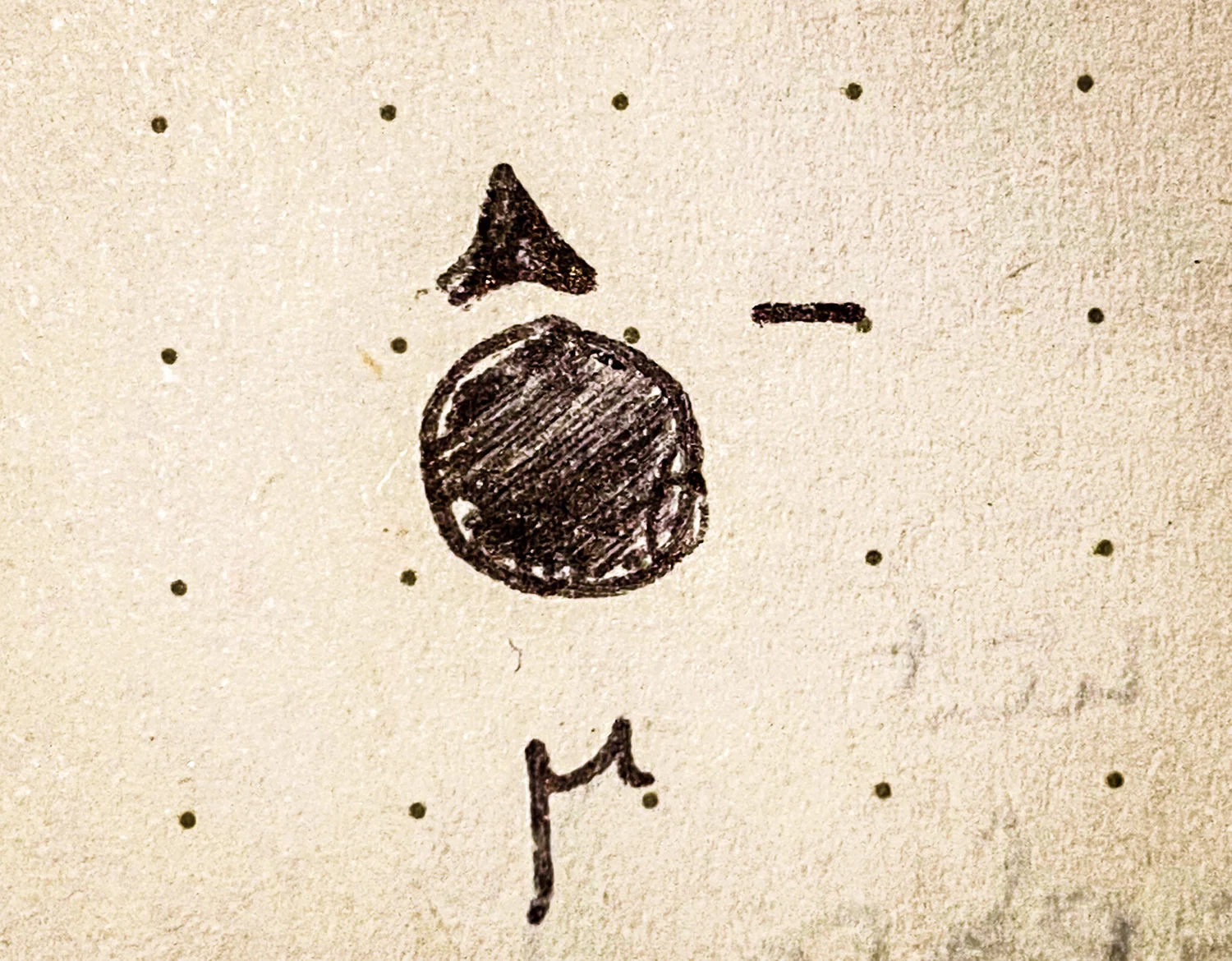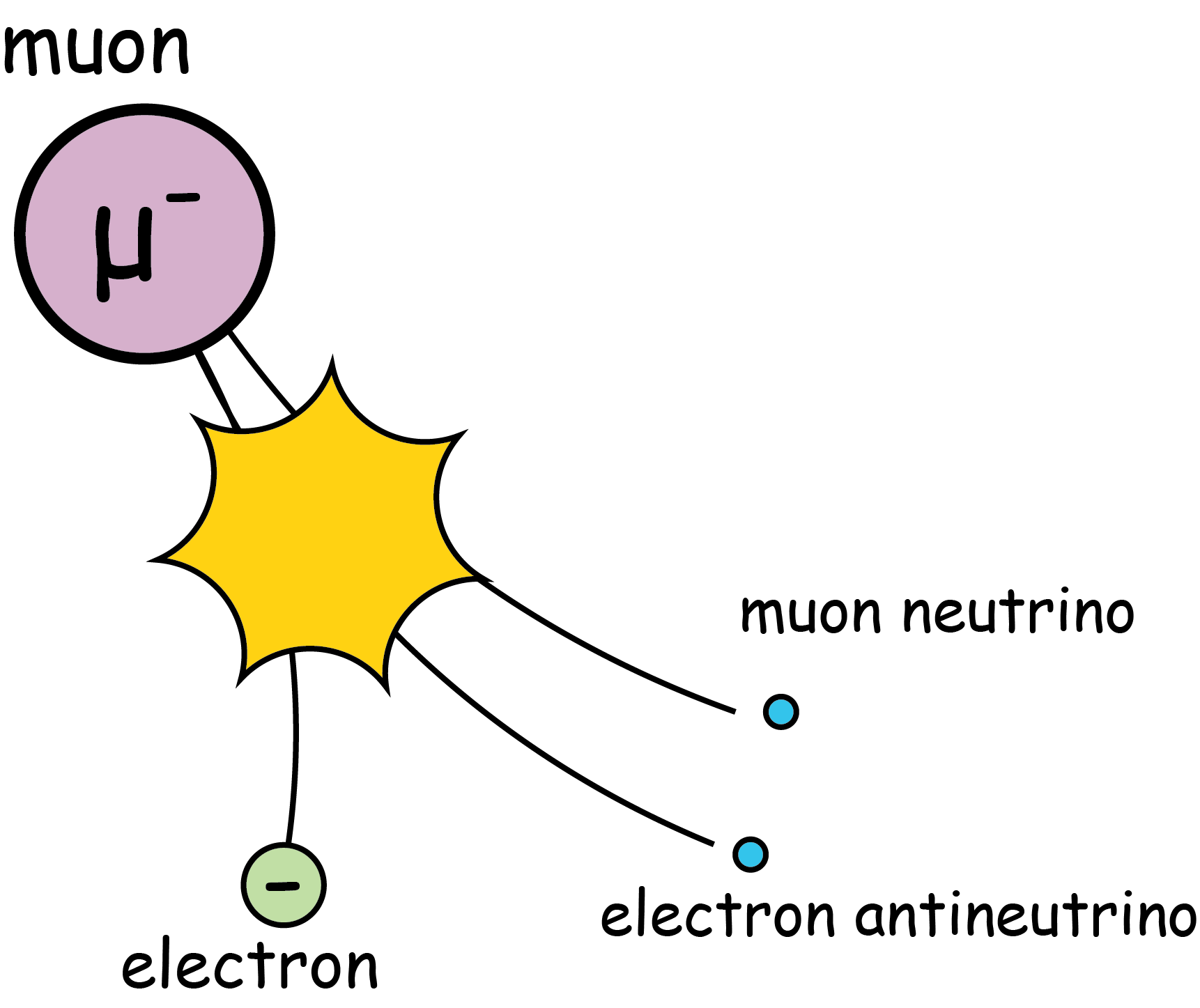
The Muon
Muons are a lesser known species of elementary particles that are extremely common, at least on Earth. They're falling all around us, all the time. Muons are created by the collision of particles from outer space smashing into the molecules of the upper atmosphere.Like all elementary particles, muons have no known size. But they do have a known mass. At 105.7 MeV, it's a moderately sized mass. It's about two hundred times the mass of the electron. The muon's electric charge is identical with that of the electron. Indeed, the muon and the electron share many of the same properties.
Like the electron, the muon interacts via the electromagnetic, weak and gravitational forces.
Unlike the electron, muons are not stable particles. Heavy particles seldom are. They're heavy, and because they otherwise act like electrons, they decay to electrons. That's a pattern we will see in particle physics, over and over again.
Figure: Muon Decay

The muon decays via the weak force to an electron and a pair of neutrini.
Muons also have antiparticle partners. Like the positron they're also positively charged. Since muons and antimuons decay, we don't usually worry too much about who's who, unless we're counting charges.
Muons decay courtesy of the weak nuclear force, which of course, is a very weak force. So that decay takes a long time. Muons, despite being unstable, are relatively long lived particles, hanging around just over a couple of microseconds. By particle physics standards, a microsecond is an eternity.
Muons typically decay into electrons and a pair of neutrini: very light, electrically neutral particles we will meet soon. That decay process is mediated by a heavy, photon like particle, the W boson.
Schematically, the muon transforms into that W boson and a muon neutrino. The W boson itself then transforms into the electron and an anti-electron neutrino.
Life is complicated, of course, and there are a few other alternative scenarios. You see, E=mc2, and the mass difference between the muon and an electron is pretty sizable, so much of that extra energy gets converted into velocity. But conservation of energy still allows for a few other options.
Occasionally - far less than one percent of the time - the muon's decay will create a bonus pair of particles: an electron/positron pair. Rarer still, an extra photon will be produced. Muons, electrons and the W bosons all participate in the electromagnetic force, so while rare, it isn't totally unexpected.
You might be surprised to learn that muons make up a pretty sizable chunk of your annual exposure to radiation. Especially if you fly.